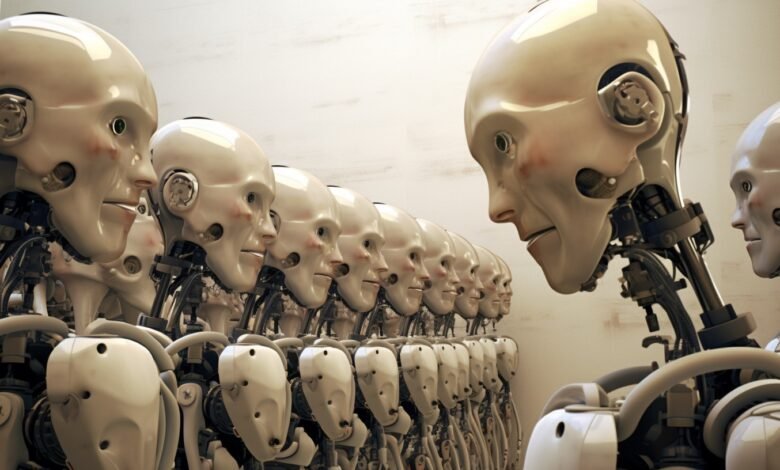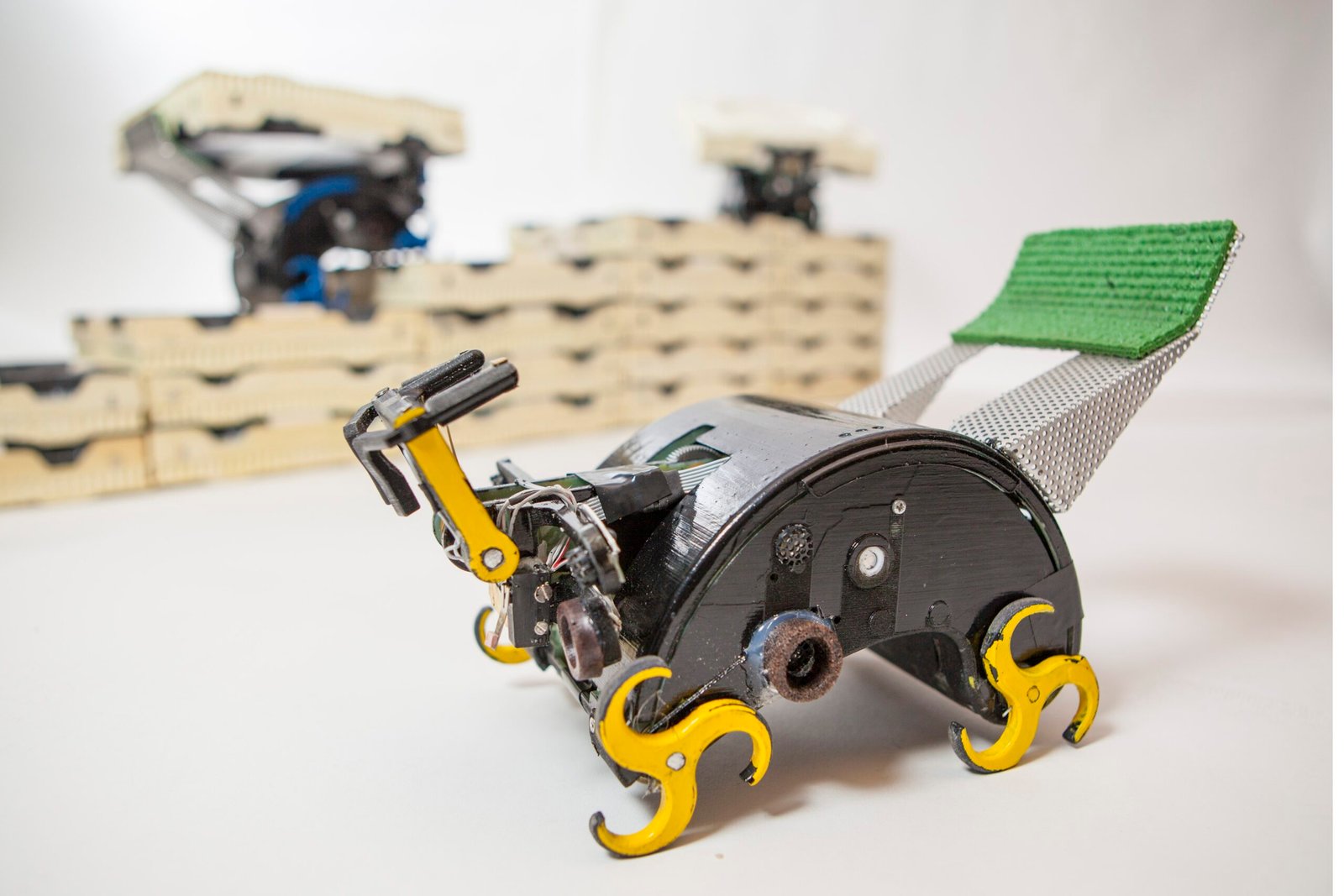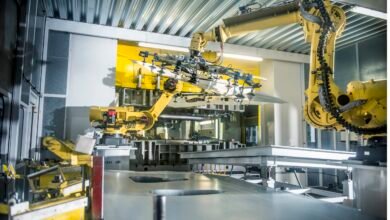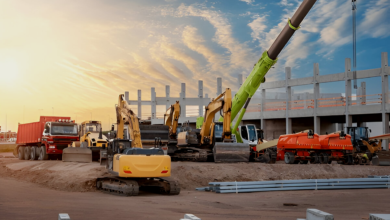How to Develop and Deploy Swarm Robotics for Efficient Tasks in 2023

Swarm robotics is an innovative field that has gained substantial attention in recent years due to its potential to revolutionize various industries. In this article, we will explore the exciting world of swarm robotics and delve into the process of Develop and Deploy these systems to accomplish tasks efficiently in 2023.
Swarm Robotics
Swarm robotics involves the coordination and collaboration of a large number of relatively simple robots to achieve complex tasks. Inspired by the behavior of social insects like ants and bees, swarm robotics leverages collective intelligence to solve problems that would be challenging for a single robot to tackle.
Advantages of Swarm Robotics
Swarm robotics offers several advantages over traditional single-robot systems. These include increased efficiency, robustness, adaptability, and fault tolerance. Since swarm robots work together as a cohesive unit, they can accomplish tasks even if some robots malfunction or fail.
Challenges in Swarm Robotics

While swarm robotics has great potential, it also faces challenges. These include maintaining communication, avoiding collisions, ensuring task allocation fairness, and dealing with dynamic environments. Overcoming these challenges requires sophisticated algorithms and communication protocols.
Components of a Swarm Robotics System
A typical swarm robotics system consists of individual robots, sensors, actuators, communication modules, and a central control unit. The robots must be designed to work collaboratively, and the communication infrastructure must support real-time data exchange.
Developing a Swarm Robotics System
The Develop and Deploy of a swarm robotics system begins with conceptualization and design. Engineers need to determine the number of robots required, their capabilities, and the tasks they will perform. The robots’ physical design and communication mechanisms are crucial factors to consider during this phase.
Programming and Communication
Programming swarm robots involves creating algorithms that dictate their behavior. These algorithms facilitate communication, decision-making, and coordination among robots. Communication protocols are designed to ensure efficient sharing of information within the swarm.
Coordination and Collaboration
Swarm robots must coordinate their actions to achieve the desired outcome. This involves sharing information, maintaining formation, and synchronizing movements. Collaboration algorithms enable the robots to work together seamlessly.
Task Allocation and Division
Efficient task allocation ensures that each robot contributes effectively to the overall goal. Robots may specialize in different subtasks or switch roles based on the situation. Dynamic task allocation algorithms optimize the distribution of tasks among robots.
Testing and Simulation
Before Develop and Deploy swarm robots in the real world, thorough testing and simulation are essential. Simulations help engineers evaluate the system’s performance under various conditions, refine algorithms, and predict potential challenges.
Real-world Develop and Deploy
Develop and Deploy swarm robots in the real world requires careful planning and consideration of the environment. The robots’ behavior must be adaptable to changes in the surroundings, and safety measures should be in place to prevent accidents.
Use Cases of Swarm Robotics
Swarm robotics has diverse applications across industries. It can be used in agriculture for precision farming, in disaster scenarios for search and rescue missions, and even in manufacturing for tasks that require high precision and speed.
Benefits in Different Industries
Different industries stand to benefit from swarm robotics. For example, in agriculture, swarm robots can optimize crop monitoring and pest control. In logistics, they can enhance warehouse automation and package delivery.
Ethical and Safety Considerations
As with any technology, swarm robotics raises ethical and safety concerns. These include issues related to privacy, autonomy, and potential misuse. Develop and Deploy must ensure that swarm robots operate within ethical boundaries and adhere to safety regulations.
Future Trends in Develop and Deploy Swarm Robotics

The future of swarm robotics is promising. Advancements in artificial intelligence, sensor technology, and communication systems will contribute to more sophisticated and capable swarm robots. These robots will likely become integral to various industries, shaping the way we approach complex tasks.
Enhanced Communication and Connectivity
The seamless interaction among swarm robots is essential for efficient collaboration. Future trends in swarm robotics emphasize the Develop and Deploy of advanced communication protocols and enhanced connectivity. This will allow robots to share information, navigate obstacles, and coordinate actions with minimal human intervention.
Decentralized Decision-Making
One of the most remarkable aspects of swarm robotics is its decentralized decision-making process. In 2023, we can expect further refinements in algorithms that enable robots to make collective decisions based on local information. This approach enhances adaptability, robustness, and scalability in swarm systems.
Adaptive Swarm Behaviors
Swarm robots will increasingly exhibit adaptive behaviors that mimic natural swarms. These behaviors include self-organization, flocking, and task allocation. This trend will enable robots to address dynamic and unpredictable environments effectively.
Swarming in Various Industries
Industries like agriculture, construction, search and rescue, and even healthcare are exploring the potential of swarm robotics. In 2023, we’ll witness a growing integration of swarms in diverse sectors to streamline operations and boost productivity.
Artificial Intelligence Integration
The integration of artificial intelligence (AI) with swarm robotics is a trend that promises to amplify their capabilities. AI-powered algorithms can optimize swarm behavior, learning from the environment and adapting strategies accordingly.
Ethical and Regulatory Considerations
As swarm robotics becomes more prevalent, ethical and regulatory concerns will come to the forefront. Questions about autonomy, accountability, and potential job displacement will need to be addressed as these robots become integral to our daily lives.
Human-Swarm Interaction
Efforts to enhance human interaction with swarm robots will shape the landscape of robotics. Intuitive control interfaces and immersive experiences will make it easier for humans to collaborate with and guide swarm robots.
Swarm Robotics for Disaster Response
In disaster scenarios, swarm robotics can play a crucial role in search and rescue operations. Their ability to cover large areas quickly and work in hazardous conditions can save lives and minimize risks to human responders.
Miniaturization and Swarm Drones
Advancements in miniaturization have led to the creation of swarm drones—tiny flying robots that can perform tasks collectively. These drones find applications in surveillance, environmental monitoring, and even entertainment.
Energy Efficiency and Sustainability
With a growing emphasis on sustainability, swarm robotics is likely to incorporate energy-efficient designs and behaviors. This could involve recharging strategies, power-sharing mechanisms, and optimized locomotion patterns.
Challenges and Limitations
Despite the exciting prospects, swarm robotics faces challenges such as maintaining robust communication, preventing collisions, and ensuring efficient resource allocation. Overcoming these hurdles will be crucial for realizing the full potential of swarm robots.
Future Prospects of Swarm Robotics

Looking ahead, swarm robotics is poised to redefine automation and collaboration across industries. As technology advances, swarm robots will become more sophisticated, adaptive, and seamlessly integrated into our lives.
Conclusion
Swarm robotics is reshaping the way we think about autonomous systems. By harnessing the power of collective intelligence, these systems offer new possibilities for efficiency and innovation. As we move further into 2023, the Develop and Deploy and deployment of swarm robotics will continue to captivate researchers, engineers, and industries alike.
Read more : How to Free Up Disk Space on PC? 7 Best Ways
FAQs(Develop and Deploy)
What is swarm robotics?
Swarm robotics involves the collaboration of multiple robots to accomplish tasks collectively.
How do swarm robots communicate?
Swarm robots communicate through predefined algorithms and protocols that enable data sharing.
Can swarm robots adapt to dynamic environments?
Yes, swarm robots are designed to adapt to changing environments and conditions.
Are there any limitations to swarm robotics?
Swarm robotics faces challenges such as communication maintenance and task allocation fairness.
What industries can benefit the most from swarm robotics?
Industries like agriculture, disaster management, logistics, and manufacturing can benefit significantly from swarm robotics.
Read more : How to Embracing Drone Technology in Various Industries in 2023








2 Comments